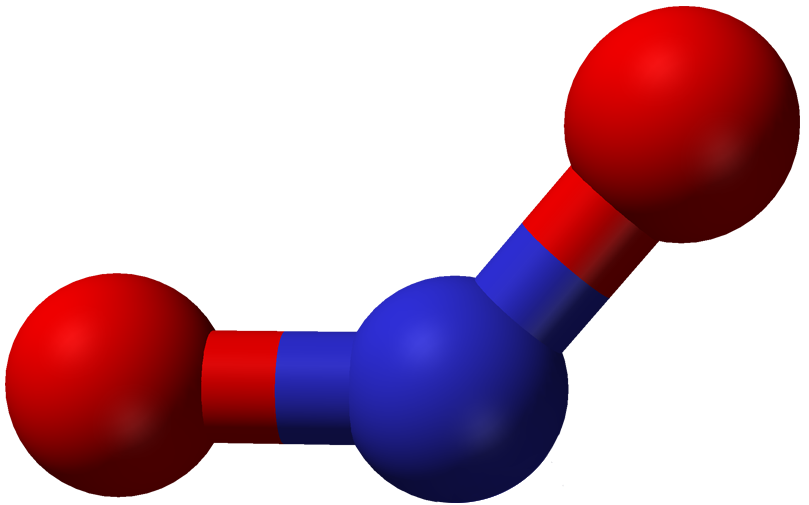Nitrogen dioxide in Washington's air
Ecology and our local partners track air emissions to make sure outdoor nitrogen dioxide levels are in the healthy range according to national standards. Nitrogen dioxide can irritate your lungs and respiratory system and cause harm to the environment. Nitrogen dioxide levels are typically higher near roadways.
Today, all areas of Washington meet the nitrogen dioxide air quality standard.
A model of a nitrogen dioxide molecule.
Nitrogen dioxide
Nitrogen dioxide is a harmful gas produced when fuel burns. Common sources in Washington are:
- Motor vehicles
- Ships and locomotives
- Industrial power plants
Nitrogen dioxide in Washington
Washington's air has never violated national standards for nitrogen dioxide. In the 1980s, nitrogen dioxide levels in urban areas were occasionally high enough to exceed today's more stringent hourly standard. Thanks to cleaner cars and nitrogen oxide reducing controls, Washington's nitrogen dioxide levels have declined.
Generally, nitrogen dioxide levels are far lower than the national standard, even at the sites located next to high traffic areas of Interstate-5 in Seattle and Tacoma.
Although current nitrogen dioxide levels in Washington meet standards by a wide margin, we are still concerned about emissions of nitrogen oxides because these pollutants contribute to other pollution problems, including ozone and fine particles.
Maintaining clean air
To ensure air in Washington continues to meet air quality standards, along with our local partners, we monitor nitrogen dioxide at four locations:
- Two locations in Seattle, representing urban and near road conditions
- One location in Tacoma, representing near road conditions
- One location on the Olympic Peninsula, representing natural conditions
What you can do
You can help protect yourself from the harmful effects of nitrogen dioxide by:
- Driving cleaner cars.
- Upgrading old engines to cleaner ones.
- Limiting outdoor activities during times of high air pollution.
- Closing windows and vents during periods of high air pollution.
Nitrogen dioxide and other oxides of nitrogen can harm the environment by contributing to:
- Acid rain.
- Regional haze (decreased visibility).
Nitrogen dioxide harms lungs. It irritates the respiratory systems and increases symptoms in people with asthma. Children, older adults, and people with asthma are at increased risk for health effects after nitrogen dioxide exposure. Long-term nitrogen dioxide exposure may cause asthma to develop in children.
Nitrogen dioxide and other oxides of nitrogen also contribute to a complex chain of chemical reactions that form ground-level ozone and nitrate containing fine particles. Ozone and fine particles are also harmful to health.
Related links
Contact information
Gary Palcisko
Toxicologist
gary.palcisko@ecy.wa.gov
360-995-3447


